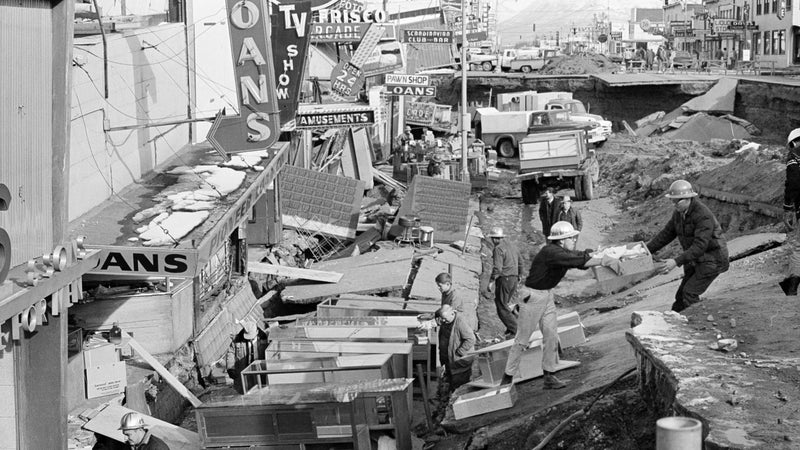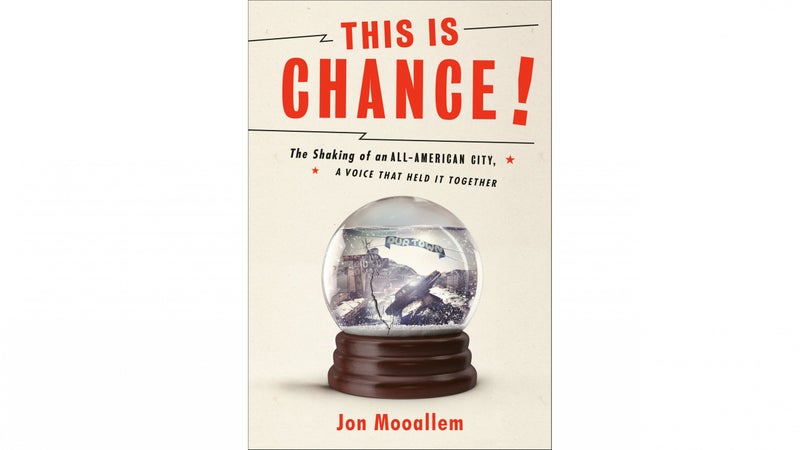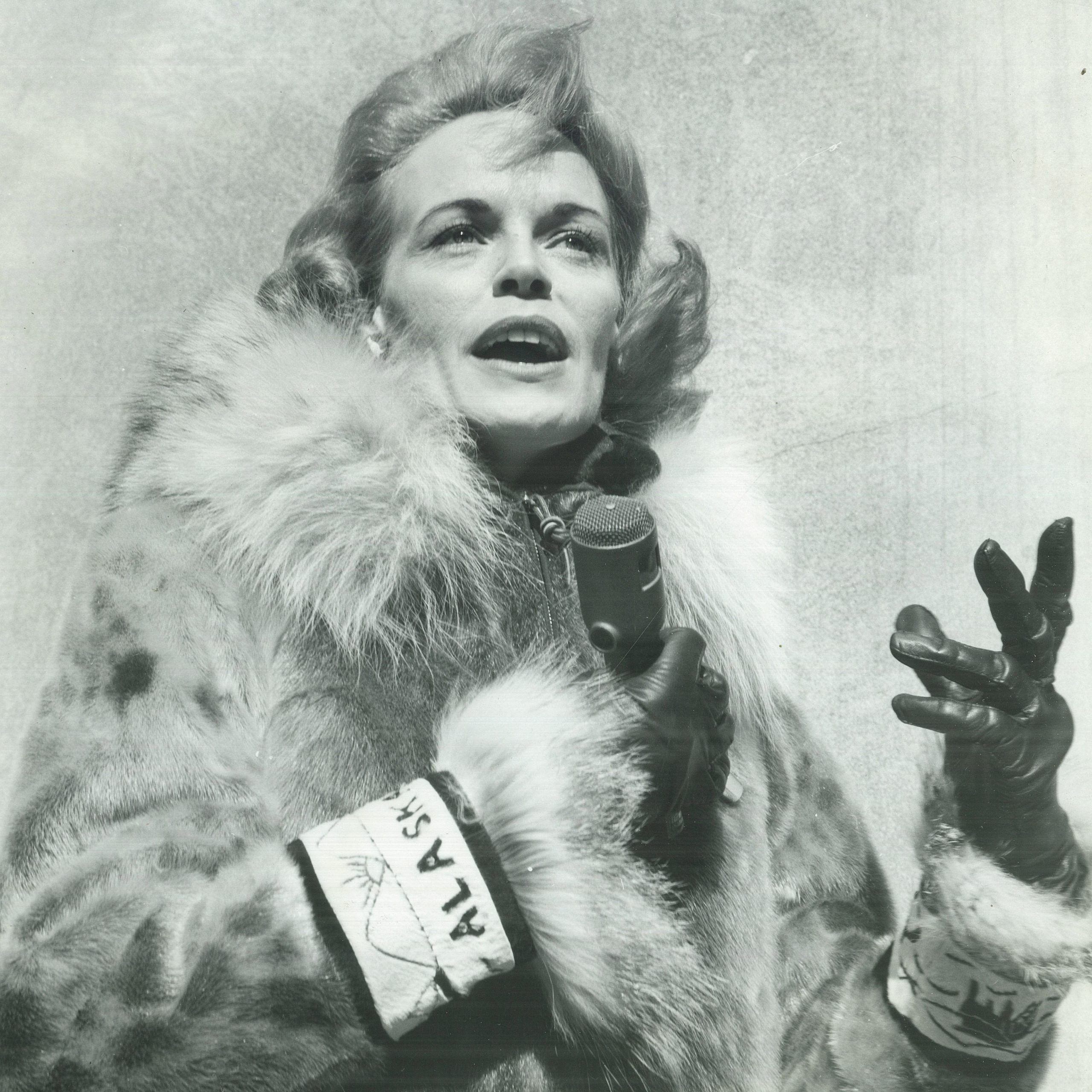Along the southern shoreline��of Alaska, underneath the Aleutian Trench in the Pacific Ocean, two tectonic plates converge. One presses beneath the other at an annual rate of about��two and a half��inches, causing a moderate earthquake about once a year. But at 5:36 P.M. on March 27, 1964—Good Friday—the plates slipped dramatically, setting off a violent��quake that rippled across the state for nearly five minutes—long enough, according to��journalist Jon Mooallem, “for some people to question if it would ever stop.” The great Alaskan quake, as it later became known, hit a record-setting 9.2 on the Richter scale. It remains the largest earthquake ever recorded in��North America��and the second-largest recorded worldwide.��
In Anchorage, just 75 miles away from the earthquake’s epicenter, a main road cracked in half, and the��wealthy enclave of Turnagain slipped almost entirely into the sea. Power lines went down. And very little information entered or exited the region��until Anchorage’s local radio station, using backup generators, burst back onto the air.
One of its local reporters, Genie Chance, was in her car with her son when the quake struck. After it subsided, and after she got a glimpse of the scale of destruction,��she only stopped to drop him��safely at home before rushing back into the field to start reporting. “For the next thirty��hours,” she recalled later, “I talked constantly.” She quickly emerged as the voice of Anchorage in the wake of the earthquake, dispatching critical updates to listeners across the region. (This included her own relatives: “The Chance family is alright,” she told her parents over the air.) Her programming was picked up by other Alaskan radio stations, then nationally; she later won numerous journalism awards for her disaster coverage. But history soon forgot about the��earthquake and the female reporter who covered it best. Chance died in 1998.

Decades later, Chance is at the center of Mooallem’s new book, ,��which will be published March 24. The veteran��journalist first learned about the great Alaskan quake��when he spotted black and white photographs of the wreckage from��tsunamis caused by the earthquake on the wall of a diner in Crescent City, California. His interest piqued, Mooallem later spent years poring��over��contemporaneous interviews, news accounts, and scientific research, including a report Chance produced for the U.S.��Geological Survey, trying to piece��together a cohesive account of that weekend. “No one had written this story before,” Mooallem told me recently.��
Before long, Chance herself became the beating heart of the story he wanted to tell. Perhaps intuiting that��her records might one day be of historical significance, Chance had sent��reel-to-reel tapes of her broadcasts to the University of Alaska, where Mooallem found and listened to them decades later. Her daughter, Jan, also had a separate trove of recordings.��As Mooallem writes it, Chance underwent a transformation from a working mom and frontier-town journalist (a typical story of hers might have been on��sled-dog races) to the most indispensable voice of a city thrust into disaster. “I was just really moved by the role that a radio person could play in that situation,” Mooallem says, “because that role fundamentally connects other people.”��
Mooallem tried to interview as many survivors of the great Alaskan quake as possible, traveling��across Juneau, Sitka, Anchorage, and rural Washington State to speak��with them. Many people who had lived in Anchorage in 1964 are scattered now, getting old, with their memories failing or already gone. The bulk��of his research was archival—he spent a lot of time in the Newark, Delaware, archives of the Disaster Research Center—and Mooallem, who usually reports on more contemporary stories,��found the gulf between himself and his subjects strange. “It layered the whole experience with this weird feeling of dislocation, that I couldn’t quite connect with those people,” he says.��
Decades of hindsight add nuance��to an otherwise straightforward narrative about disaster and recovery, allowing Mooallem to examine social issues that accounts at that time��did not. He writes, for example, of the sexism Chance��confronted at the radio station, the��“persistent, backhanded disbelief that a woman could work so hard and proficiently during a crisis.”��When she��asked for a raise, she was told she “was already making the highest salary ‘for a woman’”—she wrote��later that the station only employed her to begin with��“because I worked hard and cheap.” Chance��faced similar sexism in her later work��in Alaska’s state legislature��and endured an abusive, alcoholic husband at home.
Mooallem addresses��the “overt��racism” some Anchorage residents directed toward Native Alaskans immediately following the earthquake, a “shameful exception” to the narrative of harmony and inclusivity��that��the city wanted to tell about itself during the crisis.��He describes a tense standoff between��journalists from the lower 48 who arrived to cover the quake and the Eskimo Scouts, a contingent of the Alaskan National Guard made up of Native Alaskans,��who were tasked with securing that area for everyone’s safety. The journalists, hoping to get as close as possible to the disaster zone, soon became antagonistic; one called��the Natives “little soldiers” to belittle them.

At its core, This Is Chance! succeeds at creating the first contemporary history of how Anchorage responded to the unexpected crisis, and it paints a picture of a community coming together in the face of tragedy. It seems to offer a blueprint for us now:��a possible route forward, when previously unthinkable environmental and political catastrophes��seem to have��become a daily occurrence.��
Earthquakes, by their nature, disrupt something we��take for granted as stable: the solid ground beneath our��feet. Though that experience provokes a queasy, vertiginous fascination and tons of press coverage,��“then,��somehow, life stitches back together and you move on,” Mooallem says.��“I really wanted to spend time seeing what happens afterward��instead of just looking away.”
What he found,��when he peered into the void the earthquake ripped open, was encouraging. Sociologists with the Disaster Research Center touched down in Anchorage just a few hours after it ended��to study the city’s response. Despite prevailing fears about mass hysteria��and stampeding crowds, what they witnessed seemed to demonstrate that people are inclined toward��goodness. “Many of us have enjoyed—actually, taken a great deal of pride in—seeing the way the people of Anchorage can rise to the occasion,” Chance said shortly after the earthquake. It��supported then controversial social-science theories, which have since been borne out by decades of research, that disasters might actually bring out the best in people.
“I don’t think we have a real way to talk about what happens next in those situations,” Mooallem says, echoing an observation in��Rebecca Solnit’s , a compilation��of case studies about how communities respond to catastrophe.��“We lack the language for that aspect of our existence, the language we need to describe what happens during disaster,” Solnit writes, describing the compassionate human response that arises in the wake of a catastrophe. “And yet the experience happens anyway.”
Mooallem argues��that Chance, for one, provided the language, that her live-broadcast coverage became “not an antidote to that unpredictability, exactly, but at least a strategy for withstanding it.” In moments of chaos and upheaval, strong narratives can make sense of what previously seemed senseless. “The disaster had no narrator,” he writes. That is, until Genie Chance got back on the air.


